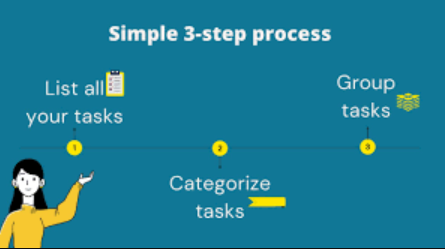In today’s fast business world, United Franchise Group (UFG) leads over 1,600 sites in 60 countries. Being a leader means using time well to work better and stay successful. Good time skills help you make top-notch work, cut stress, and boost creativity.
The workplace today has lots of things that can distract you. In fact, leaders often deal with hundreds or even thousands of these daily. Such distractions can slow down reaching your goals. This article shares ten tips for leaders to get better at managing their time and focus.
One key to good leadership is having clear goals that are always in sight. This makes it easier to stay focused. It’s also important to deal with distractions well. Some tips are to not have chairs in front of desks or to limit how long you talk to others. These can help not lose time and stay productive.
There are only 24 hours in a day, so managing time is very important. Experts in time management recommend using tools to track time and plan. This can make leaders much more efficient. The right tools and planning help make sure the most important tasks are done first, so leaders can get more done.
Using smart time management skills helps leaders grow in their work and personal life. Whether it’s sharing work, handling emails well, or making a special calendar, good time management is crucial for long-term success in leadership.
Understanding the Importance of Time Management
Time management is key for leaders guiding teams to success. Efficient leadership boosts productivity and improves overall performance. Missed deadlines from poor time management can hinder team success.
Impact on Productivity and Efficiency
Managing time well boosts productivity by setting clear goals. Prioritizing tasks with tools like Eisenhower’s Matrix is crucial. A well-kept schedule and delegating tasks helps avoid procrastination.
Regular breaks are important to stay focused and prevent burnout. This approach keeps productivity and efficiency high.
Benefits for Personal and Professional Life
Good time management improves both work and life outside. Leaders can balance work and personal life, meeting all goals. Balancing demands boosts confidence, reducing stress.
Efficient leadership through time management benefits both aspects of life.
Know How You’re Spending Your Time
Learning how we use time is key to using it well. Research on 27 big company CEOs showed they have a hard time with their schedules. It’s not clear how exactly they’re spending their time. While they make the big calls, they mix hands-on choices with big picture plans.
Utilizing Time-Tracking Tools
Time-tracking apps are a must for leaders. Tools like Harvest and TrackingTime track work time against distractions. They work with Slack, keeping everyone updated and accountable.
Identifying Time-Wasting Activities
By using these tools, leaders can spot what’s wasting their time. Being smart about what tasks to focus on is crucial. Setting priorities, skipping small crises, and sharing tasks boost how much they get done. Productivity tools make task handling easier and help focus on what really matters.
Stick to a Daily Schedule
Many leaders feel overwhelmed by their jobs’ demands. Effective daily planning is key to keep up with work. A structured daily schedule makes time management better. This in turn cuts down on stress and bad decisions caused by that stress.
Creating Realistic Timelines
It’s important to set realistic timelines. Leaders often make the mistake of thinking they can do more than they actually can. Setting deadlines helps to tackle this problem, making tasks more manageable. This also fights against Parkinson’s Law, which suggests work will take up all available time if not set.
Maintaining Undivided Attention
Keeping focus all through the day boosts one’s productivity. A study by Slack shows many workers find this challenging. To combat this, limit time on non-work websites and mobile use. But it doesn’t stop there. Self-discipline is crucial. It means finding a quiet space, avoiding multitasking, and keeping focused.
In short, following a plan, setting realistic timelines, and fighting distractions can really amp up how much you get done. And it can help those in leadership positions handle their high-stress roles better.
Prioritize Tasks Effectively
Leaders need to prioritize tasks to boost productivity and cut down stress. They can use tools like the Eisenhower Matrix and decision matrix. These tools help them manage many tasks better, making sure the big ones get done first.
Using the Eisenhower Matrix
The Eisenhower Matrix is a great way to sort tasks by how urgent and important they are. Leaders can see if they should do a task right away, put it off, give it to someone else, or drop it. Studies show most results come from just a few tasks, which fits well with this method.
Importance vs. Urgency
Knowing what’s urgent versus important is key. Urgent tasks need to be done now, while important ones help reach long-term goals. The matrix helps by splitting tasks into four groups. This makes sure leaders deal with what’s really important.
Putting tasks in order helps get more done with focus. Using to-do lists and tools like Microsoft OneNote can also help. Setting due dates and importance levels makes organizing tasks easier. It might take time to get used to this method, but the benefits are huge — from better time management to less stress.
Automate Repetitive Tasks
Automating repetitive tasks is a big win for leaders. It helps increase productivity. With tools like the Slack Workflow Builder, you can start this process easily. This tool lets leaders make custom automations without needing to code. It means they can hand off boring jobs to focus on more important things.
Choosing the Right Automation Tools
Choosing the best automation tools is vital. They should work well with what you already have and boost productivity. Take the Slack Workflow Builder for example. It lets teams make communication and processing easy. This saves time and cuts down on mistakes caused by tiredness. Mistakes from being tired make up almost half of all errors. The Method software is another good choice. It links with QuickBooks and Xero and makes follow-ups easy. This improves how well things are done and keeps people engaged.
Benefits of Automation
Getting automation in place has many good points. It makes nearly 9 out of 10 workers happier because they’re not stuck in boring tasks. It boosts efficiency, makes more things, and cuts down on errors. The reports you get from automation are quick and correct. This saves a lot of time. Scheduling employees automatically makes things fair and keeps them happy.
It also saves a lot of money, up to 30%. This means you can make more things and spend less time on small jobs. Tools for automating workflows help owners and employees work better. This means you’re free to dream big and work on new ideas. It keeps you ahead in your area.
Tackle the Most Difficult Task First
Starting your day with the hardest job, known as “eating that frog,” is a smart move. This tip comes from Brian Tracy, a famous leadership expert. It helps beat procrastination and ensures key tasks get done first when you’re full of energy.
Researchers Francesca Gino and Bradley Staats found that knocking out easy jobs first boosts brain chemicals. It makes us more alert, remember better, and stay motivated. This energizes us to tackle the big stuff later. Doctors improved how they worked over six years by handling the tough cases early. This shows the power of facing big challenges from the get-go.
When faced with more work, an 8% higher chance appears that people will pick the simpler tasks. But, doctors got through harder cases faster, proving tough jobs weren’t best left until later. They were more efficient. This finding highlights why it’s crucial to teach the value of facing hard tasks for career growth.
Complex projects should be turned into small, doable steps. This tip stops delays and makes you feel good with each step you complete. Using the 1-3-5 rule to plan your day helps too. It means doing one big task, three medium ones, and five small jobs each day. That keeps your work day well-organized and productive.
Setting goals in your “Discomfort Zone” might seem scary at first. But it pays off big over time. Such a mindset change can tweak your habits and make hard tasks seem easier. This way, managing all your work becomes much smoother.
Batch-Process Similar Tasks
Research from the University of California Irvine shows too many interruptions cause stress and frustration. This can lead to high cortisol levels and mental fatigue. Task batching helps by letting people group similar tasks and work on them together. They do this at certain times, which cuts down on jumping from one task to another.
When you get distracted, it takes about 23 minutes to get back on track. This shows how bad for productivity context switching is. By using task batching, people can better manage their time. They focus on work deeply with fewer distractions. This is called deep work and can lead to doing better quality work.
Task batching doesn’t only make you more productive; it also builds a need to get things done. By setting time blocks for certain tasks, you put a limit on time spent per task. This can help you finish on time and avoid putting things off. Then, you have more free time, which makes you feel better.
Telling your team about your focus hours is important when you’re using task batching. When everyone knows, they respect the time you need to concentrate. This makes the work environment better. Managers also benefit by finding it easier to keep track of big projects. They don’t get as tired making decisions since tasks are clearly organized into blocks.
Task batching lessens interruptions, which can prevent burnout and help your mental health. You end up being more productive. Your brain works better, too, since you’re not wasting time switching between too many things. Plus, you feel more sure of yourself and have more energy. In the end, batch processing your tasks helps you focus on important work by wasting less time.
Put AI to Work for Search and Summaries
Artificial intelligence is now more than just automating simple jobs. It helps us work better through smart search and summaries. Tools like generative AI are key in making our work smoother. They save time, let us focus on important tasks, and boost creativity.
Enhancing Productivity with AI
AI tools change how leaders and teams tackle their tasks. For instance, Slack AI features make work more personal and find important info easily. This leads to improved team work. Users report that AI saves them time (90%) and makes them more creative (84%).
AI Tools to Consider
If you want top AI tools, consider these. Fellow starts at $7 per user monthly and scores 4.7 out of 5 on G2. Fireflies.ai offers prices from $10 to $39 per seat monthly with a similar 4.7 rating. ServiceNow also boosts productivity. It includes GenAI experiences that improve workflows. These tools help work smarter and get ready for an AI-filled future.
FAQ
Why is time management crucial for leaders?
Time management is key for leaders to be successful and happy. It helps them be more productive and efficient. This leads to better work, lower stress, and more confidence in hard tasks.
How does time management impact productivity and efficiency?
Managing time well helps leaders do better work and feel less stressed. Good time management beats procrastination and boosts creativity. This lets leaders do more and start new projects.
What tools can help leaders track their time effectively?
Tools like Harvest and TrackingTime help track time. They show when leaders are being productive or wasting time. By identifying distractions, leaders can use time better.
How can leaders stick to a daily schedule?
Having a set daily schedule with realistic times is crucial. It helps avoid thinking too optimistically. Not using the internet and phones for personal stuff helps stay focused.
What is the Eisenhower Matrix, and how can it help with task prioritization?
The Eisenhower Matrix sorts tasks by importance and urgency. It helps by making leaders focus on what’s really needed. This way, they can do important tasks first and say no to less essential ones.
How can automation improve time management for leaders?
Automating simple tasks gives leaders more time for important things. Slack’s Workflow Builder, for example, lets them set up automations easily. This keeps them focused on big goals.
What is the “eating that frog” principle, and why is it effective?
The “eating that frog” idea is doing the hardest thing first in the day. It fights procrastination and uses the time when we’re most alert best.
How does batch-processing similar tasks enhance efficiency?
Batch processing means doing similar tasks together. This stops constant task changing that lowers work quality. Leaders stay focused and get more done this way.
How can AI assist in improving productivity and managing time?
AI boosts productivity by helping with tasks like finding info quickly, making summaries, and creating content. Slack AI, for example, gives custom answers and highlights, saving time.

More Posts
How to Make Time Go Faster At Work
Are you wondering how to make time go faster at work, eh? It is, after all, an art form, and we all have our distinct ways of it. That’s because there are days...
How to Use Technology To Streamline Daily Planning Process
In an era where the speed of business processes is rapidly accelerating, it’s crucial to refine your daily planning process. This blog post illustrates how to leverage technology to make your planning more...
Best Month Planner Online- Reach Monthly Goals
Looking for the best month planner online? Check out our top 6 picks for the best monthly planner applications, both Free & Paid. In today’s fast-paced digital age, organizing tasks, goals, and commitments...
5 Best Daily Time Planner Apps
Are you looking for the best daily time planner apps? Life can get hectic in managing daily tasks, appointments, project deadlines, and important events. Suppose you are also a victim of trying to...



